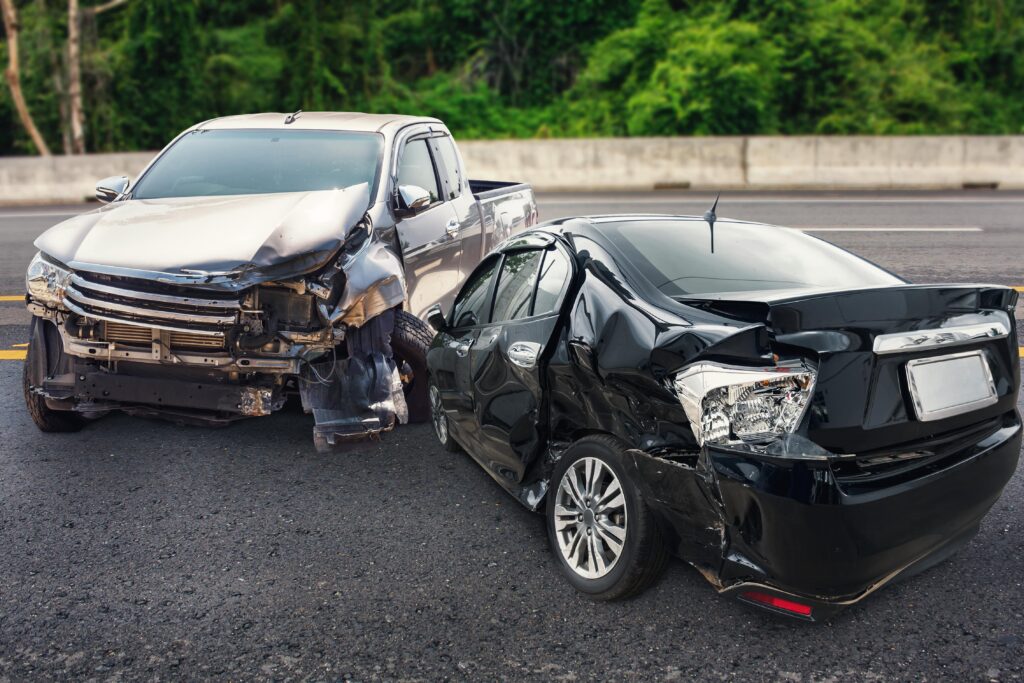Overview of the Common Car Accident Types in California
Every driver hopes to stay safe on California’s busy roads, but accidents can happen in a split second. Whether you’re driving on I-5, the 405, or through downtown Long Beach, knowing the most common types of car accidents can help you recognize hazards and prevent a serious collision.
At The Beliz Law Firm, we’ve represented countless crash victims throughout California, and we’ve seen firsthand how different types of car accidents can lead to unique injuries, damages, and legal challenges. By understanding these accident types, you’ll know what to look out for and what to do if you’re involved in one.

Here are the most common types of accidents:
1. Rear-End Collisions
Rear-end collisions are the most frequent type of car accident in California. They typically occur when a driver follows too closely or becomes distracted by their phone or GPS. Even at low speeds, these crashes can cause whiplash, neck, and back injuries.
Who’s Usually at Fault:
The trailing driver is often liable for failing to maintain a safe distance, but fault can sometimes be shared if the lead driver brakes suddenly or has malfunctioning brake lights.
2. Side-Impact (T-Bone) Accidents
A side-impact or “T-bone” accident happens when one vehicle crashes into the side of another — often at intersections. These collisions can cause severe injuries because the sides of vehicles offer less protection.
Common Causes:
- Running red lights or stop signs
- Failing to yield the right of way
- Distracted or impaired driving
Prevention Tip:
Always look both ways, even when you have a green light, to spot drivers who may run through the intersection.
3. Head-On Collisions
Head-on crashes are among the deadliest types of car accidents because of the combined force of impact. These typically occur on two-lane roads when one driver drifts into the opposite lane due to fatigue, distraction, or intoxication.
Injuries Often Include:
Traumatic brain injuries, spinal cord injuries, and internal organ damage. Survivors often face long-term rehabilitation and significant financial losses.
4. Sideswipe Collisions
Sideswipe accidents occur when two vehicles traveling in the same direction make contact, usually during unsafe lane changes or merging. Even minor sideswipes can cause drivers to lose control, especially at high speeds on freeways like the 405 or 710.
Tip: Always check your blind spots and use your turn signals — sideswipes often happen when drivers fail to look before merging.
5. Multi-Vehicle Pileups
These chain-reaction crashes often occur on California’s crowded freeways or in foggy Central Valley conditions. With multiple vehicles involved, determining fault can be complex.
Common Factors:
- Sudden braking in heavy traffic
- Poor visibility due to weather
- Distracted driving
An experienced personal injury attorney can help navigate the insurance complications in multi-vehicle claims.
6. Hit-and-Run Accidents
Unfortunately, hit-and-run accidents are on the rise in California. Drivers may flee to avoid legal trouble, leaving victims to face injuries and property damage alone.
If You’re a Victim:
Call the police immediately, document the scene, and gather any witness statements or surveillance footage. Your uninsured motorist coverage may help compensate you.
7. Single-Vehicle Crashes
These occur when a driver loses control and hits a guardrail, tree, or road barrier. While some result from driver error, others stem from hazardous road conditions, defective auto parts, or evasive maneuvers to avoid another negligent driver.
8. Rollover Accidents
Rollover crashes are less common but extremely dangerous. They’re more likely in taller vehicles like SUVs and trucks, especially during sharp turns or after hitting a curb.
In many cases, poor road design or a defective tire can contribute to the rollover.
9. Pedestrian and Bicycle Collisions
In urban areas like Long Beach, pedestrian and bicycle accidents are far too common. Drivers who fail to yield at crosswalks or turn without checking blind spots often cause devastating injuries to those on foot or two wheels.
Injured in One of These Types of Accidents? Contact Us
Understanding the different types of car accidents can help you stay safer on California’s roads — and know what to do if a crash happens. But even cautious drivers can’t always avoid negligent motorists.
If you or a loved one has been injured in any type of collision, The Beliz Law Firm is here to help. Our California car accident lawyers will guide you through every step, from investigating fault to fighting for full compensation for your injuries.
Contact The Beliz Law Firm today for a free consultation and learn how we can help you get back on the road to recovery.
FAQs
Q: What are the most common types of car accidents in California?
Rear-end collisions, side-impact crashes, and head-on collisions are the most common. Multi-vehicle pileups, sideswipes, and pedestrian accidents are also frequent in urban areas.
Q: Which type of car accident causes the most injuries?
Head-on and side-impact collisions often cause the most severe injuries due to the force and angle of impact.
Q: Who is usually at fault in a rear-end accident?
Typically, the driver in the back is at fault for following too closely or not paying attention. However, each case is unique and may involve shared fault.
Q: What should I do after any type of car accident?
Seek medical attention, call the police, document the scene with photos, and exchange information with the other driver. Then contact a personal injury attorney before speaking with insurance companies.
Q: How can a lawyer help after a car accident?
A car accident attorney investigates the crash, identifies liable parties, handles insurance negotiations, and ensures you pursue the maximum compensation available for your injuries and damages.